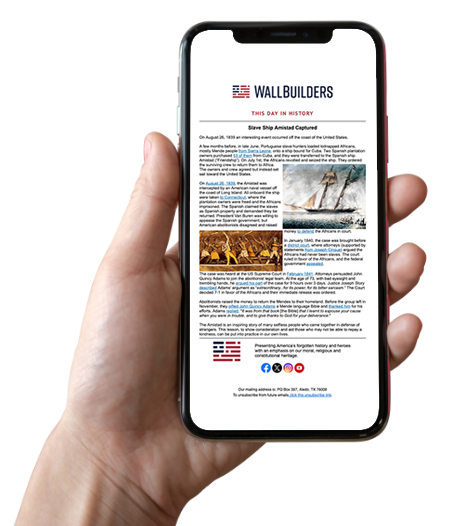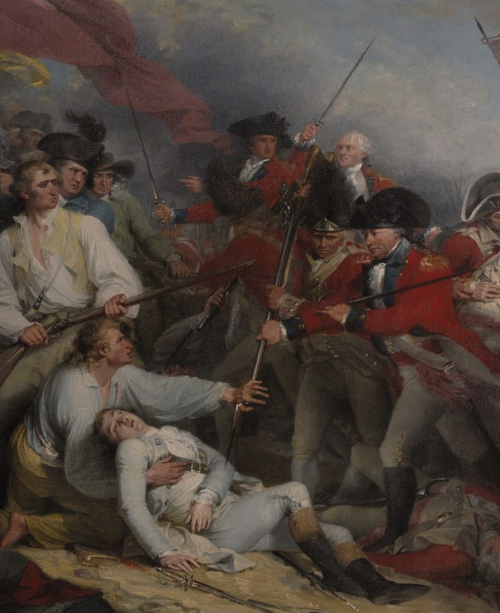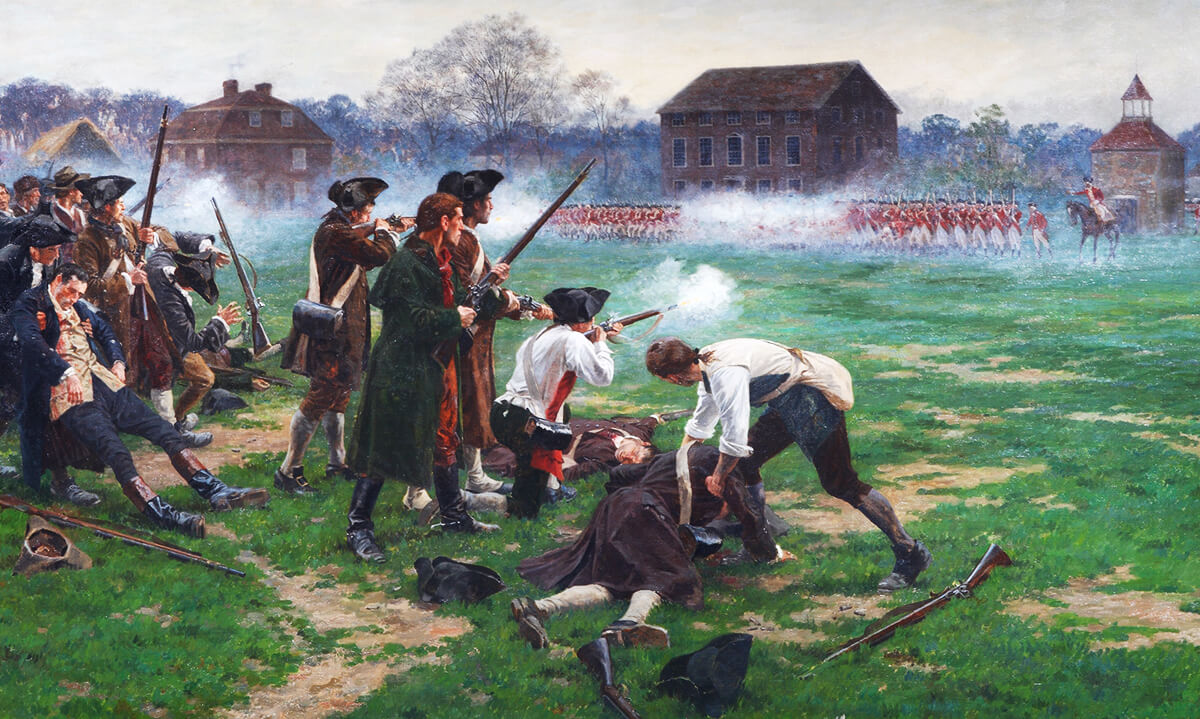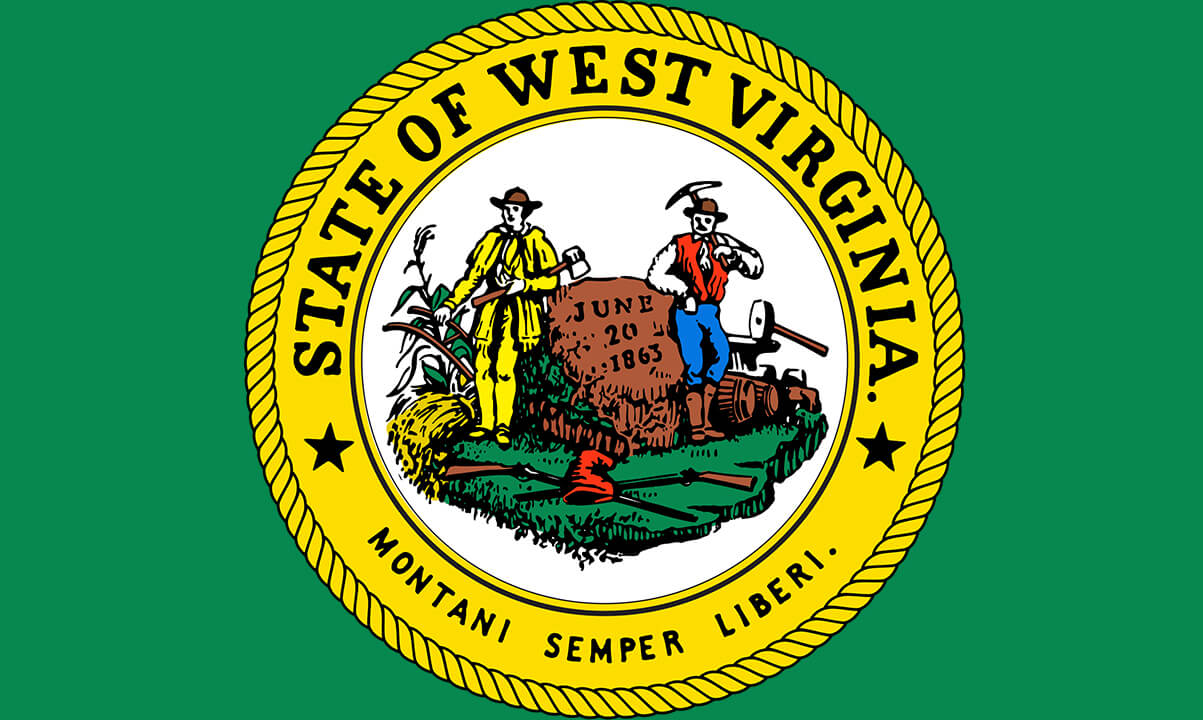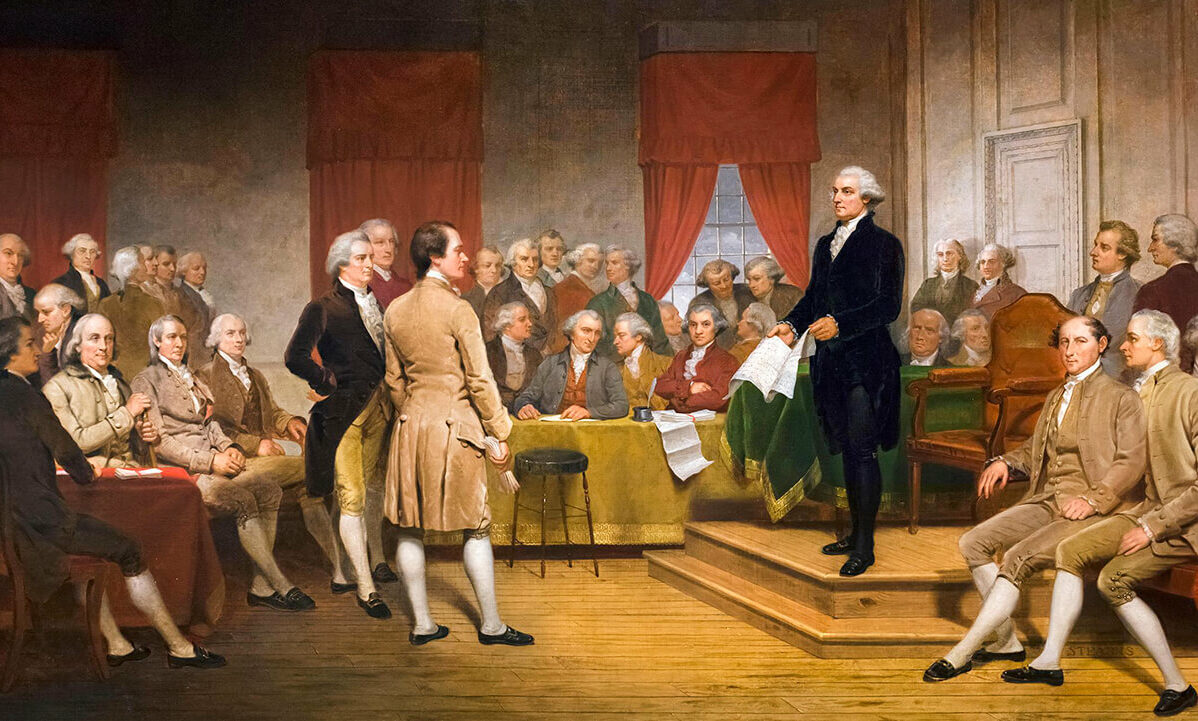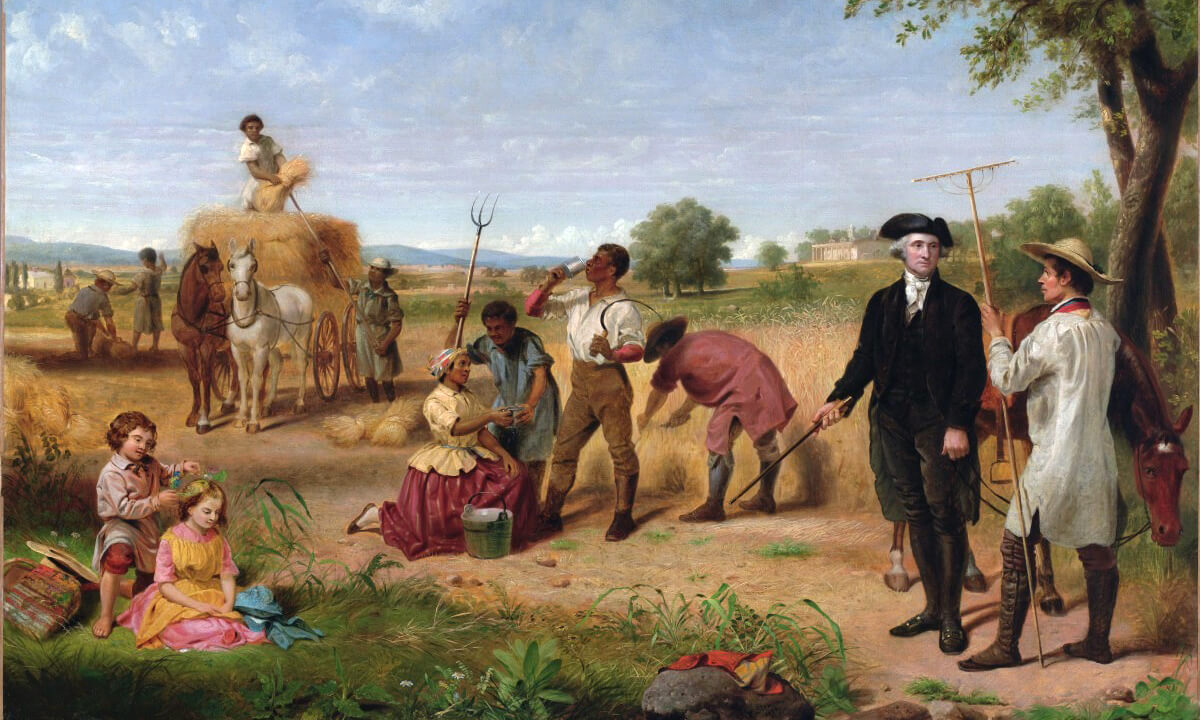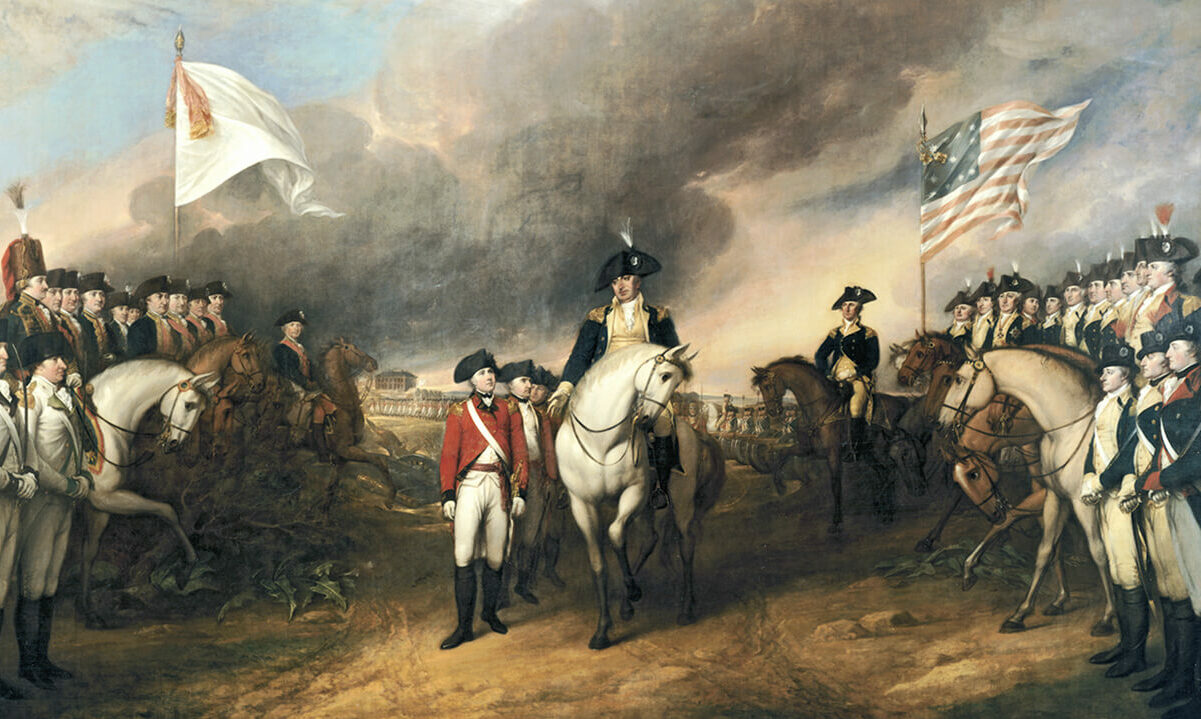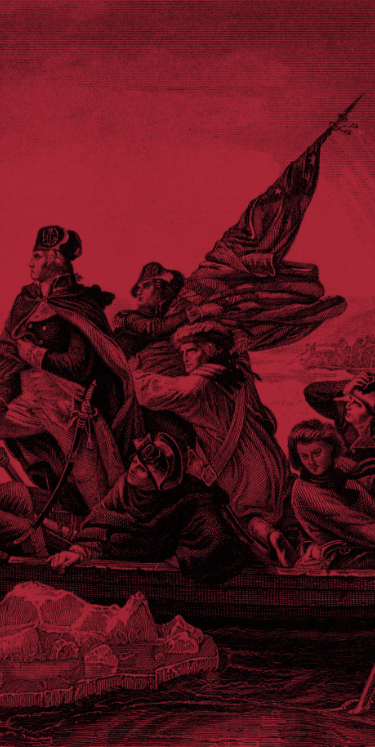African American History Month provides an excellent opportunity for WallBuilders to accomplish its mission of “presenting America’s forgotten history and heroes, with an emphasis on our moral, religious, and constitutional heritage.”
In this year’s issue, WallBuilders will highlight three notable (but often forgotten) ministers who were active before and during the national revival known as the Second Great Awakening (1795- 1845). These black ministers labored alongside white Christians and preached to both white and black congregations.
This should not seem unusual, however, for truly mature followers of Christ in all eras have long recognized that there are not several races but only two: the believer and the nonbeliever (Galatians 3:28 & Colossians 3:11). The stories of these three ministers are inspiring and are characterized by sacrifice and Christian courage.
African American poet James Weldon Johnson (1871-1938) properly said of these ministers:
The old-time Negro preacher has not yet been given the niche in which he properly belongs. . . . It was through him that the people of diverse languages and customs, who were brought here from diverse parts of Africa and thrown into slavery, were given their first sense of unity and solidarity. He was the first shepherd of the bewildered flock. His power for good or ill was very great. It was the old-time preacher who for generations was the mainspring of hope and inspiration for the Negro in America.
The Rev. Andrew Bryan 1737-1812
Andrew Bryan was born in slavery and grew up as a slave on a plantation in South Carolina. In 1782, Andrew and his wife Hannah became Christians under the preaching of the Rev. George Liele (1752 – 1828), an African American born into slavery who ministered the Gospel to other slaves. (Liele was the first African American ordained as a Baptist preacher.) Only nine months after his conversion, Andrew – still a slave – was preaching to both black and white congregations. He evangelized slaves on neighboring plantations and erected a crude wooden church; his congregation grew rapidly, attended by both blacks and whites. On January 20, 1788, Bryan was ordained as a Baptist minister.
As a result of the rapid growth of his church, persecution was initiated by nearby slave owners who feared a revolt if slaves heard the message of freedom in the Gospel. Hundreds of converted slaves not only were denied water baptism by their masters but also were forbidden to attend Bryan’s services. Many who did attend were flogged and severely punished, and even Andrew was whipped, beaten, and imprisoned (much like Paul and Silas in Acts 16:19-25), and his church was seized. (Andrew’s master, who supported his ministry, helped arrange his release from jail.)
Was Andrew bitter at this unjust treatment? Not at all. Instead, just as Jesus had instructed in Matthew 5, Andrew exulted in his persecution, proclaiming that “he rejoiced not only to be whipped but would freely suffer death for the cause of Jesus Christ;” he also prayed for the men who had persecuted him. This Christ-like behavior in Andrew won the respect of many observers.
Upon the death of his “master” in 1790, Andrew purchased his freedom and that of his wife. In 1794, several influential whites helped him raise the money to purchase property upon which to build a new church – the Bryan Street African Baptist Church (the first black Baptist church in America). Andrew then purchased a lot near the church upon which to build his home.
Within six years, the church had grown to almost 700 members (a large church at any time, it definitely was a mega-church in that era). In 1800, the church was reorganized as the First African Baptist Church of Savannah, and one of its ministries was a black Sabbath school – the first in the city. However, because Andrew’s goal was not simply to have a large congregation and an impressive church, in 1802 he deliberately split the congregation and planted a new church: the Second African Baptist Church of Savannah (its pastor, Henry Francis, started a school in the church to educate black children). The church growth continued, and in 1803 Andrew split the church again, forming the Third African Baptist Church of Savannah. As these churches grew, their congregations pioneered churches in other parts of the State.
At that time in America’s history, Georgia was one of the most stridently pro-slavery states in America. Thomas Jefferson (who in 1783 proposed the first antislavery law in America) noted that it was the influence of Georgia, North Carolina, and South Carolina that kept the national anti-slavery law from passing in Congress. Georgia had even been unable to provide its share of soldiers for the American
Revolution because its citizens feared that if they left their plantations to fight for American independence, their slaves would escape. Clearly, slavery was strongly embraced in Georgia, so Andrew labored in a region of the country in which ministry by – or to – African Americans was exceptionally difficult.
Nevertheless, upon Andrew’s death in 1812, the Savannah Baptist Association (comprised of the white Baptists of the city), praised Bryan’s work, proclaiming:
The Association is sensibly affected by the death of the Rev. Andrew Bryan, a man of color, and pastor of the First Colored Church in Savannah. This son of Africa, after suffering inexpressible persecutions in the cause of his divine Master, was at length permitted to discharge the duties of the ministry among his colored friends in peace and quiet, hundreds of whom, through his instrumentality, were brought to knowledge of the truth as “it is in Jesus.”
The ministry of Andrew Bryan brought thousands in Georgia to a personal relationship with God through Christ.
The Rev. “Black Harry” Hoosier (or Hosier) 1750-1810
Harry Hoosier was born a slave in North Carolina, but toward the end of the American Revolution he obtained his freedom, converted to Methodism, and became a preacher. In 1781, he delivered a sermon in Virginia entitled “The Barren Fig Tree” – the first recorded Methodist sermon by an African American. Despite the fact that Hoosier was illiterate, he became famous as a traveling evangelist and was considered one of the most popular preachers of his era. In fact, after hearing Harry preach in and around Philadelphia, Dr. Benjamin Rush (1745-1813), a signer of the Declaration of Independence and an evangelical Christian, declared that accounting for his illiteracy, Hoosier was “the greatest orator in America.”
Early in his ministry, Harry became a close associate of Bishop Francis Asbury (1745- 1816), the “Founding Father of the American Methodist Church.”
(In 1771, Asbury – an Englishman – heard an appeal from John Wesley for preachers to go to America to “spread the Word.” Asbury responded, and during the next four decades he preached almost 20,000 sermons and rode over a quarter of a million miles across America – on horseback! When Asbury first arrived, there were only 550 Methodists in America, but by the time of his death in 1816, there were 250,000 – and 700 ordained Methodist ministers. In 1924 when a statue of Bishop Asbury was erected in Washington, DC, President Calvin Coolidge declared of Asbury that “He is entitled to rank as one of the builders of our nation.”)
Hoosier and Bishop Asbury traveled and preached together, but Bishop Asbury (who drew huge crowds) remarked that Harry drew even larger crowds than he did! In fact, the Rev. Henry Boehm (1775-1875) reported: “Harry. . . . was so illiterate he could not read a word [but h]e would repeat the hymn as if reading it, and quote his text with great accuracy. His voice was musical, and his tongue as the pen of a ready writer. He was unboundedly popular, and many would rather hear him than the bishops.” Harry also traveled and preached with other popular bishops of that era, including the Rev. Richard Whatcoat (1736- 1806), the Rev. Freeborn Garretson (1752-1827), and the Rev. Thomas Coke (1747-1814). The Rev. Coke said of Asbury that, “I really believe he is one of the best preachers in the world. There is such an amazing power that attends his preaching . . . and he is one of the humblest creatures I ever saw.”
Hoosier ministered widely along the American frontier and is described by historians as “a renowned camp meeting exhorter, the most widely known black preacher of his time, and arguably the greatest circuit rider of his day.” However, he was unpopular in the South for two reasons: first, frontier Methodists such as Hoosier tended to lean Arminian in their theology, contrasted with the denominations of the South that were largely Calvinistic (e.g., Presbyterians, Reformed, Episcopalians,
Baptists, etc. – yes, the Baptists of that day were largely Calvinistic!); second, Methodists were outspoken against slavery whereas the majority of the South supported slavery. Therefore, southern groups such as the Virginia Baptists came to use the term “Hoosiers” as an insulting term of derision that they applied to Methodists like Black Harry Hoosier, meaning that they were anti-slavery in belief and Arminian in theology.
Fisk University history professor William Piersen believes that this is the source of the term “Hoosier” that was applied to the inhabitants of Indiana. Piersen explains, “Such an etymology would offer Indiana a plausible and worthy first Hoosier – ‘Black Harry’ Hoosier – the greatest preacher of his day, a man who rejected slavery and stood up for morality and the common man.”
Noted African American historian Carter Woodson reported the words of early Methodist historian John Ledman in describing the closing chapter of Harry Hoosier’s life:
After he had moved on the tide of popularity for a number of years . . . he fell by wine – one of the strong enemies of both ministers and people. And now, alas! this popular preacher was a drunken ragpicker in the streets of Philadelphia. But we will not leave him here. One evening, Harry . . . determined to remain there until his backslidings were healed. Under a tree he wrestled with God in prayer. Sometime that night, God restored to him the joys of his salvation [Psalm 51:12]. . . . About the year 1810, Harry finished his course. . . . An unusually large number of people, both white and colored, followed his body to its last resting place, in a free burying ground in Kensington [near Philadelphia].
The Rev. Harry Hoosier was used by God to draw thousands of Americans to Christ during the early decades of the Second Great Awakening.
The Rev. John Marrant 1755-1791
John Marrant was born in New York in 1755. His father died early in John’s life; and in 1766 when John was eleven, his mother sent him to Charleston, South Carolina, to live with an older sister and learn a trade. After arriving in Charleston, John had a change of plans; as he explained: “I had passed by a school and heard music and dancing, which took my fancy very much; and I felt a strong inclination
to learn the music. I went home and informed my sister that I would rather learn music than go to a trade.” John therefore undertook the study of music and became skilled with both the violin and the French horn. According to John, within two years (while he was only thirteen years of age): “I was invited to all the balls and assemblies that were held in the town, and met with general applause of the inhabitants. I was a stranger to want, being supplied with as much money as I had any occasion for.”
On his way to play at one of those musical events, John and a friend passed a crowded meetinghouse. John noticed that the large crowd was gathered around “a crazy man halloing there.” The “crazy man” was the Rev. George Whitefield, and the assembly was one of many religious meetings that occurred during the First Great Awakening – a national spiritual revival that lasted from 1730-1770.
(The Rev. George Whitefield (1714-1770) has been called the greatest evangelist of all time. Born in England, he became a missionary to America, making seven separate trips and spending nine years preaching across the country. It is estimated that he preached to nearly ten million individuals in his lifetime, with crowds of 20,000 being common and reaching as high as 100,000 (of course, there was
no sound amplification then, and it was reported that Whitefield’s natural voice could be heard up to one mile away, thus easily accommodating such crowds). Whitefield preached some 18,000 sermons in his life – an average of 500 a year, and 10 each week. Often, up to 500 hearers at a time would fall to the ground and lie prostrate under the power of his sermons.)
John’s friend who was accompanying him, wanting to disrupt Whitefield’s event, dared John to take his French horn and “blow [it] among them.” Marrant accepted the challenge; raising the horn to his lips and preparing to blow, Whitefield suddenly looked directly at John, pointed his finger at him, and announced, “Prepare to meet thy God, O Israel!” Marrant immediately fell prostrate as though struck down (c.f., John 18:6 & Revelation 1:17), remaining motionless for almost half an hour. When John recovered, Whitefield ministered to the young boy and spent time with him. On the third day, Marrant committed his life to Christ and dedicated himself to Gospel ministry. (Marrant’s conversion occurred on Whitefield’s final missionary journey to America.)
An overjoyed Marrant returned to his family to share his newfound experience with them, but they rejected him. Like Moses of old (Exodus 2:15), John fled to the wilderness. There he met a Cherokee warrior and they spent ten weeks together, hunting and becoming fast friends. When they eventually returned to the Indian’s camp, Marrant was made a prisoner (the Cherokees at this time were often at war with the settlers; it was clear to the Cherokees that the black Marrant was not an Indian, so he therefore was an enemy settler).
When the Cherokee chieftain threatened John with death, John addressed the Cherokees in their own language and shared with them the Gospel of Christ. According to Marrant, “The king [the chief ] himself was awakened, and the others set at [spiritual] liberty. A great change took place among the people; the King’s house became God’s house; the soldiers were ordered away; and the poor condemned prisoner [Marrant] had perfect liberty and was treated like a prince. Now the Lord made all my enemies become my great friends.” Thus being released from his captivity, the chief granted Marrant permission to evangelize among the Cherokee – which he did for the next nine weeks, also evangelizing among the
Muskogees. As noted by African American historian Arthur Schomburg (1874-1938), Marrant was: “A Negro in America [like] the Jesuits of old, who spread the seed of Christianity among the American Indians before the birth of the American Republic.”
Following his success with his missionary endeavors, Marrant returned to his family; but they again rejected him because they now considered him too much of an Indian. Ironically, throughout his life Marrant was often faced with rejection which he overcame on each occasion: first, his family rejected his calling toward the Gospel ministry (yet he persevered and entered anyway); next, the Cherokees rejected him because he was a settler (again he overcame and evangelized among them); then, when he returned to his family, they rejected him as being too much of “a savage” in “the Indian style” (once more he persisted until he broke through the rejection and was finally reunited with his family).
Following these evangelistic efforts, Marrant agreed to work as a carpenter on a plantation near Charleston; and while working there, he evangelized among the slaves. As he explained, “During this time, I saw my call to the ministry fuller and clearer – had a feeling of concern for the salvation of my countrymen.” Sadly, however, when the mistress of the plantation found the slaves at prayer, she alerted her husband, who rounded up a posse and raided the prayer meeting. According to Marrant, “As the poor creatures came out, they caught them and tied them together with cords till the next morning, when all they caught – men, women, and children – were stripped naked and tied (their feet to a stake, their hands to the arm of a tree) and so severely flogged that the blood ran from their backs and sides to the floor, to make them promise they would leave off praying.”
All of this activity occurred before the American Revolution; and when the Revolution did commence, Marrant was impressed by the British into the navy. Following the war, he settled in England, and on May 15, 1785, was ordained as a Christian minister by the Calvinistic Methodists, a group started by George Whitefield. (Whitefield and the Wesleys worked together in forming the Methodist church, but the Wesleys became more Arminian in theology whereas Whitefield remained more Calvinistic and thus headed the Calvinistic Methodists.) Marrant continued his ministry efforts, preaching in England, then Canada, and then back in the United States. While in America, he became ill, and being in poor health, he desired to return to England to see his friends there. He died shortly thereafter at the age of thirty-six. Despite the apparent shortness of his life, Marrant nevertheless accomplished much, and was among the first African Americans to evangelize successfully among the American Indians.
Summary
These three famous ministers (the Rev. Andrew Bryan, the Rev. Harry Hoosier, and the Rev. John Marrant) were all well-known and even nationally known ministers in their day; all were extremely effective; all contributed greatly to the growth of American Christianity in particular and America in general. These three are just a few examples of the forgotten heroes and history that WallBuilders is proud to reintroduce to this generation of Americans!
Still looking for answers? Visit our FAQ page
More Resources
Know the Truth and Protect Your Freedoms.
Still looking for answers? Visit our FAQ page
Stay Informed with the Latest Resources
Enter your email address to receive our regular newsletter, with important information and updates right in your inbox!
